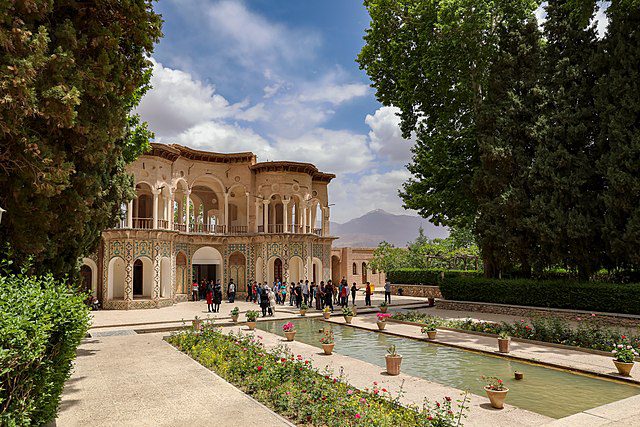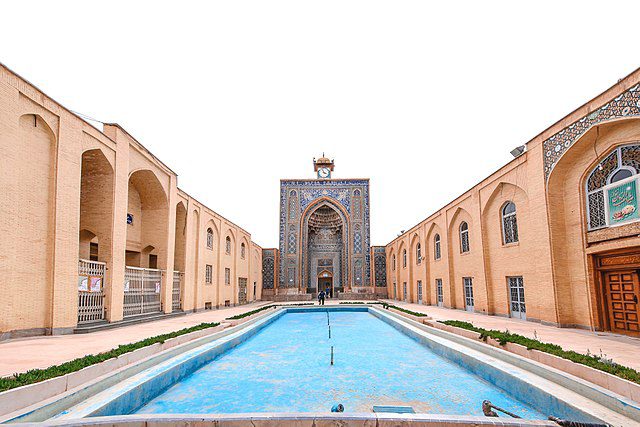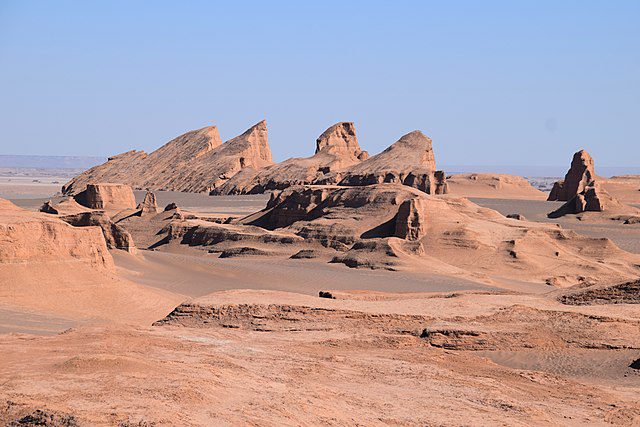Table of Contents
Kerman, situated in the southeastern part of Iran, is a hub of fascinating history and stunning architecture. Its location near towering mountains adds to its allure, making it a must-visit destination for history enthusiasts.
Kerman attractions are filled with surprises, from ancient forts to beautifully decorated mosques. Wander through its bustling markets and explore its narrow streets to uncover the city’s rich past. Whether you’re admiring old forts or marveling at intricate mosques, Kerman promises an unforgettable journey through time and culture.
Let’s explore the top things to do in Kerman together:
Lut Desert
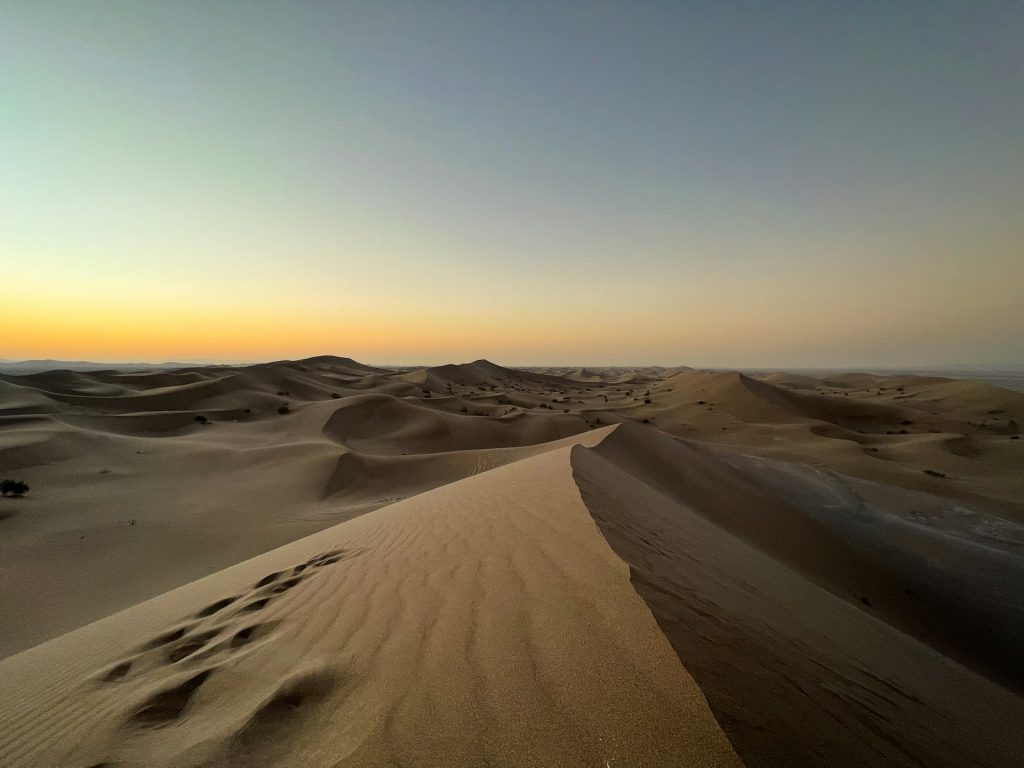
Lut Desert or Dasht-e Lut, also called the Loot Desert or Emptiness Plain, spreads across the Iranian plateau between Kerman and Sistan Va Baluchestan Provinces. It’s known as Iran’s largest hollow, with scorching heat and very little water, making it one of the driest and hottest places globally.
To the west lies Namakzar, a wild area impassable during rains. In the east, shifting sands create massive dunes, some towering as high as 300 meters, reminiscent of the Sahara. In the center, wind-sculpted ridges and furrows stretch over 150 kilometers, reaching heights of 75 meters. Despite its harshness, Dasht-e Lut captivates with its rugged beauty, inviting adventurers to uncover its mysteries. It is one of Kerman top attractions.
Fath Abad Garden
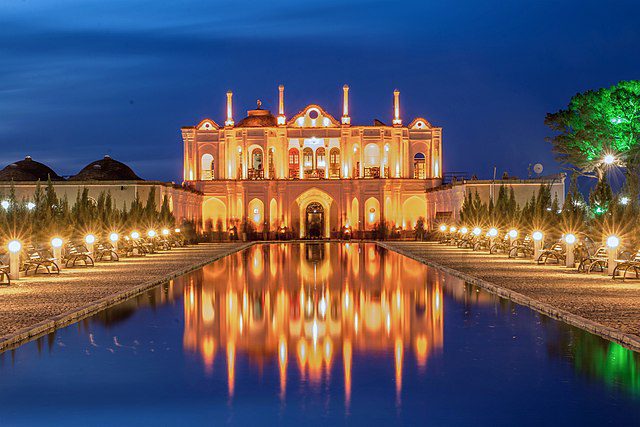
Once considered one of Persia’s most beautiful gardens and also Kerman sightseeing, Fath Abad Garden in Kerman fell into disrepair over the years, with many trees dying. Recently, though, it has undergone a stunning restoration, bringing back some of its former glory. Built in 1870 during the Qajar period, this garden is famous for its lovely pond and intricate buildings.
Surrounded by pistachio gardens, Fath Abad Garden is best seen at sunset when the colors change and the night lights add to its charm. It’s a magical place that showcases the enduring beauty of history, inviting visitors to experience the wonder of Fath Abad Garden once again.
Tomb of Shah Nimatullah Vali
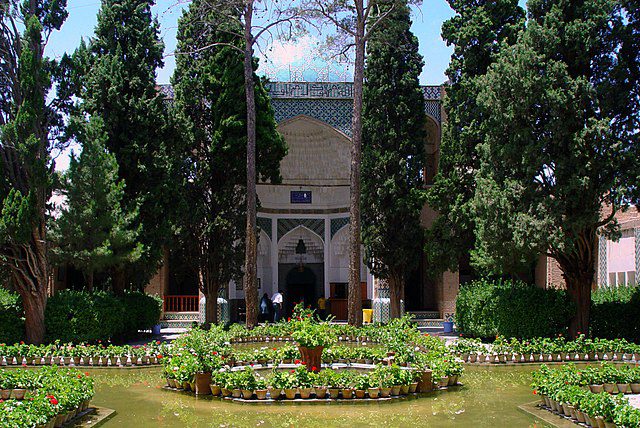
Shah Nematollah Vali, a Persian Sufi Master and poet from the 14th and 15th centuries, is celebrated as a wise figure from the early 9th century AH. Both Sunni Muslims and the Nimatullahi Sufi order hold him in high regard, considering him a saint and their founding figure, respectively. His tomb and monastery are located in Mahan, Kerman, with the Hezar Shah structure as its centerpiece, built around 840 AH.
Over time, more sections were added to the complex, like the Vakil-ol-Molk courtyard, built during the Qajar era. The architecture blends Mongol and Esfahani styles, making it a standout in Iran’s desert region. As visitors explore the site, they encounter various courtyards and sections, each adding to the significance of Shah Nematollah-e Vali’s shrine. It is considered one of Kerman top attractions.
Shazdeh Mahan Garden
Just a quick 30-minute drive south of Kerman sits the captivating Shazdeh Mahan Garden, a UNESCO World Heritage site that seems to rise magically from the desert. Encircled by walls, this oasis boasts lush greenery and refreshing mountain water, offering a serene escape from the arid surroundings. It is also one of the things to do in Kerman at night.
Visitors can relax at the on-site tea house and accommodation, making it perfect for a peaceful evening visit when the setting sun paints the garden in warm colors. Keep in mind that the garden may undergo maintenance in winter, so it’s wise to check ahead to avoid any disappointment. Loved by Iranians of all ages, take your time to wander and soak in the beauty of Shazdeh Mahan Garden at a leisurely pace.
Ganjali Khan Mosque
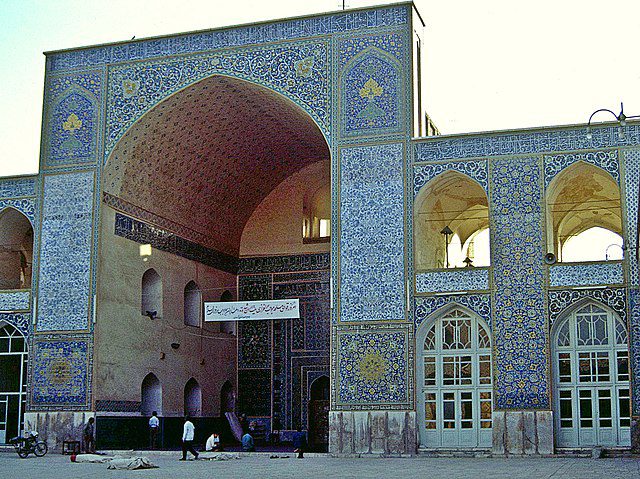
Situated in the northeastern part of the Ganjali Khan complex in Kerman, this small but fascinating structure acts as a mini-museum, showcasing beautiful Islamic artwork like tiles, plaster designs, and calligraphy. Built in 1007 AH, the mosque also has 14 shops, which adds to its historical importance. It is one of the top and free things to do in Kerman.
Once the private prayer place for Ganj Ali Khan, a notable governor in the 17th century who contributed to Kerman’s bazaar, the mosque gives a glimpse into the region’s past. Behind simple metal gates, a narrow passage leads to a richly decorated chamber with a stunning dome and intricate windows. Visitors can climb a narrow staircase for a closer view of the mosque’s impressive details.
Part of the larger Ganj Ali Khan Complex, built during the Safavid era, the mosque is just one part of a remarkable collection that includes a bathhouse, inn, market, and mint, all surrounding a charming square. Reminiscent of famous buildings like Naghsh-e-Jahan in Isfahan and Amir Chakhmaq in Yazd, the complex stands as a testament to Iran’s rich culture and architectural legacy.
Bam Citadel
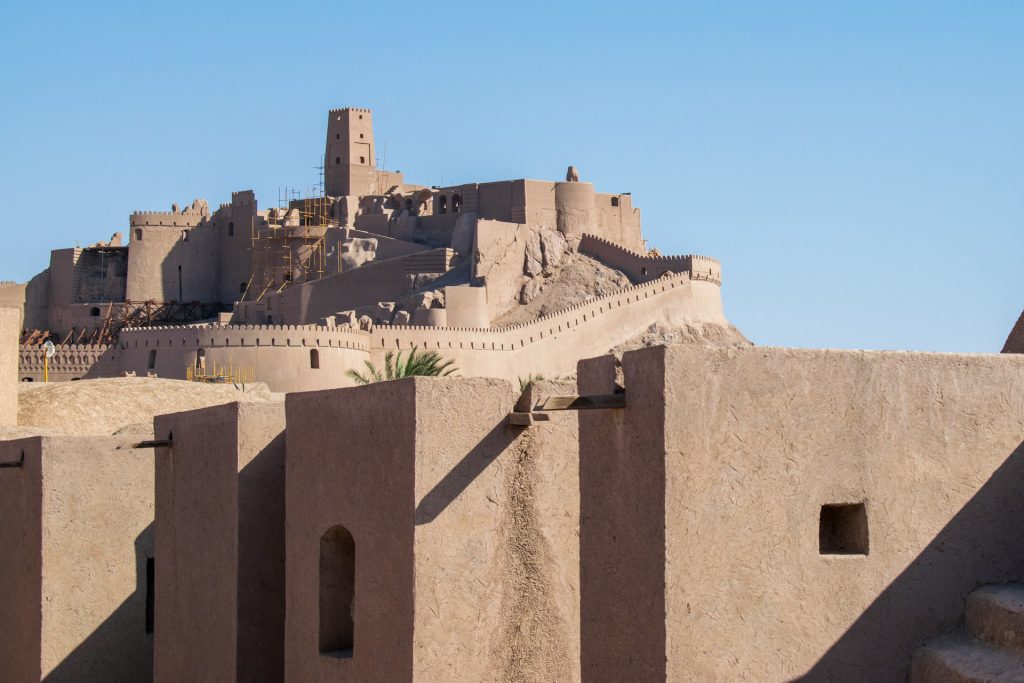
Bam, known as Iran’s sandcastle fortress, sits in a desert oasis just two hours south of Kerman. It dates back to the Achaemenid period, around the 6th to 4th centuries BC, and later became a significant stop on the Silk Road. This led to the development of underground irrigation canals called qanāts and the creation of Arg-e Bam, a fortified medieval town made of layers of mud, considered one of the finest examples in the world.
In 2003, a powerful earthquake struck Bam, causing extensive damage. For 15 years, experts worked tirelessly to restore the site to its former glory. Today, Bam stands as a symbol of resilience and one of the best Kerman sightseeing, showcasing Iran’s rich cultural heritage for visitors to explore and appreciate.
Kerman Bazaar
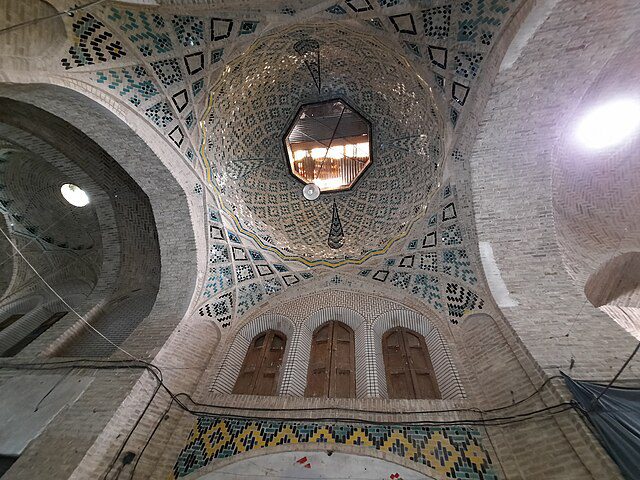
Kerman Grand Bazaar is a standout spot in the city, known as one of Iran’s oldest bazaars. There’s so much to see here. Take your time wandering around, and don’t forget to bring your camera – the friendly stall owners are happy to pose for pictures.
Make sure to check out the gold section and copper bazaar, they’re cool. And if you have some extra time, look for the bathhouse museum nearby. The bazaar has everything you could want, from sweets and bread to herbs and pistachios. It’s a lively place with lots of history, and you can’t leave without buying some of Kerman’s famous handicrafts, like petticoats and carpets, don’t forget to grab some cumin, a famous herb from Kerman.
Jameh Mosque of Kerman
Masjed-e Jameh Kerman, also called Jameh Mozaffari Mosque, was finished around 750 AH by Amir Mobarezeddin Mohammad-e-Mozaffari-e-Meybodi Yazdi. It’s one of Iran’s oldest buildings, dating back to the time after the Al-e-Booyeh dynasty.
The mosque has a tall entrance gate in the east, decorated with beautiful tiles and a clock tower. It’s built symmetrically and has porches for both summer and winter. Masjed-e Jameh Kerman showcases Iran’s rich history and attracts visitors from all over the world.
Jabalieh Dome
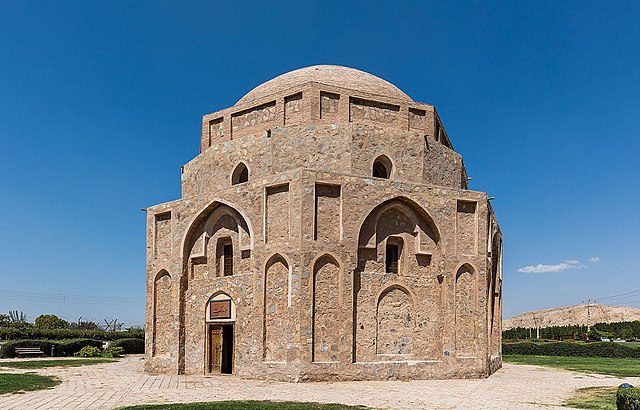
Gonbad-e Jabaliye, also called Jabalieh Dome or Gabri Dome, sits in Kerman and has an octagonal shape. It’s made of brick and stone, while the rest of the building is of stone and gypsum. The design is inspired by the Sassanid period and is believed to have been a Zoroastrian shrine or fire temple.
Some think it’s from the Sasanian Era and was fixed up in the early Islamic Era, especially during the Seljuk Dynasty by Mohammad Ibn Alyas. It’s placed by a hill, which might have kept it safe from floods over time.
Shahdad Kalouts
In the heart of Kerman lies a natural marvel that’s hard to believe until you see it—the Shahdad Kalouts. These towering sand cliffs, as one of Kerman top attractions, stretching far and wide, invite adventurers and nature lovers for an unforgettable experience. Holding the impressive title of the world’s largest, they paint a breathtaking picture against the endless sky.
As you step into this captivating landscape, you’ll find yourself amidst nature’s own artwork, shaped by winds and time. The Shahdad Kalouts tell a story of resilience and transformation, with salt springs bubbling up, creating a mesmerizing oasis in the heart of the desert. It’s not just about what you see; it’s about feeling the earth’s beauty and marveling at the wonders it holds.
FAQs about Things to Do in Kerman
Q1: What are some cool places to visit in Kerman?
A1: Cool places to check out in Kerman include the Lut Desert, Fath Abad Garden, Tomb of Shah Nimatullah Vali, Shazdeh Mahan Garden, Ganj-Ali Khan Mosque, Bam Citadel, Kerman Bazaar, Jameh Mosque of Kerman, Jabalieh Dome, and Ebrahim Khan School.
Q2: Why is the Lut Desert special?
A2: The Lut Desert, also known as Dasht-e Lut, is Iran’s biggest hollow. It’s super hot and has lots of dunes and cool ridges, making it an exciting place to explore.
Q3: What’s cool about Fath Abad Garden?
A3: Fath Abad Garden is an old garden from a long time ago. It got fixed up recently and looks really nice now. It has a pretty pond, cool buildings, and is surrounded by pistachio gardens. It’s extra pretty at sunset!
Q4: What’s so important about the Tomb of Shah Nimatullah Vali?
A4: The Tomb of Shah Nimatullah Vali is where a famous Persian Sufi Master is buried. The building is cool and shows off different styles of architecture from a long time ago.
Q5: Why is Shazdeh Mahan Garden famous?
A5: Shazdeh Mahan Garden is famous because it’s a UNESCO World Heritage site. It’s like an oasis in the desert, with lots of plants and nice buildings. People love it because it’s beautiful and shows off Iran’s history.
Last Words: Explore the Best Things to Do in Kerman with a Customized Tour
Kerman, in the southeast of Iran, has lots of cool history and pretty buildings. It’s near big mountains, which makes it even more interesting for history lovers. In Kerman, you’ll find old forts and beautiful mosques. Walk around its busy markets and small streets to learn about its past. Whether you like old forts or fancy mosques, Kerman has a lot to offer for a fun trip exploring history and culture.
To truly make the most of your trip to Iran and discover all the amazing things to do in Kerman, it’s smart to consider a customized tour. At To Iran Tour, we specialize in creating personalized experiences for travelers like you. Our goal is to design a plan that fits exactly what you’re looking for, making sure you have an amazing time exploring Iran.
Whether you’re a history lover, an outdoor enthusiast, or just someone looking for a new experience, let To Iran Tour help you have the trip of a lifetime.


